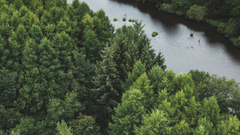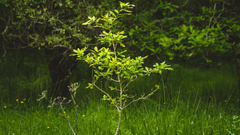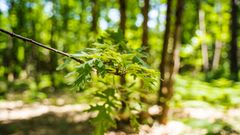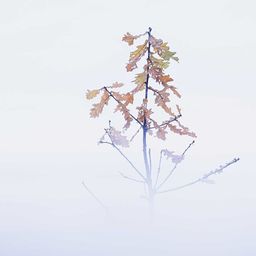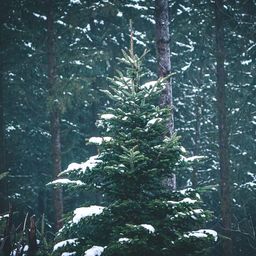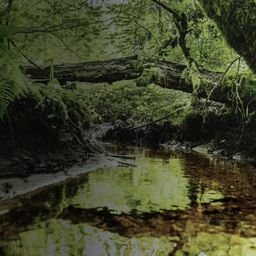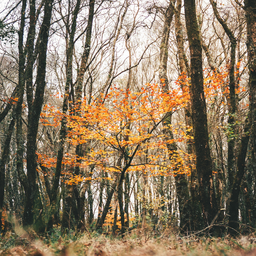Feb 2, 2022
What are wetlands and why does our planet need them?
Our planet's wetlands are under threat, which means we need to make extra effort to regrow and restore these crucial habitats.

All over the world, wetlands are under threat from unsustainable farming practices. That’s why we need to put in extra effort to regrow and restore them to their natural habitats.
Did you know wetlands have their very own day? It’s true – International Wetlands Day falls on 2 February, so let’s look at what wetlands are, why they are so important, and what we can do to increase their number.
What is a wetland?
A wetland is an area of land where water covers the soil either permanently or during specific seasons. Water in wetlands comes from precipitation, the ground or nearby waterways. Most are flooded or constantly humid.
Mosses, marshes and bogs
Mosses and marshes are examples of wetlands and often called bogs.
Mosses tend to be on higher ground and so mainly get their water from precipitation. Marshes, on the other hand, are deeper and get their water from both precipitation and surrounding land. Marshes usually feature richer vegetation, but also need more nutrition.
It is common for bogs and marshes to form larger bogs – natural, varied and species-rich wetlands. These are often rich habitats that are home to many plants and animals. When bogs become smaller and fewer, species become threatened or disappear from the area.
Why wetlands are important
Wetlands are natural water filters that capture pollutants, such as phosphorus and heavy metals. Many animals thrive in wetlands, which makes them vital for maintaining natural, biodiverse habitats.
According to the Wildfowl & Wetlands Trust (WWT), an incredible 40% of the world’s plants and animals depend on wetlands. As wetlands reduce in both number and size, the impact on animal life and biodiversity is huge. Right now, 25% of wetland species face extinction.
Wetlands also protect against floods by letting water sink into the ground, so when they disappear the risk of flooding increases. They are also useful in times of drought, because they store water that can then be used.
Wetlands are also one of the planet's best carbon sinks. They capture and store carbon dioxide from the atmosphere and so counteract climate change. The maths is simple. Fewer wetlands means more damage to the planet.
Finally, wetlands also play a major social role in society. They are excellent tourist spots and great for fishing, birdwatching and other outdoor activities. As untouched nature becomes more scarce, we need to make the most of it.
Threats to wetlands
You often find wetlands near agriculture, forestry and buildings.
Those things become a threat when they are not sustainably managed. So-called digging often takes place to prepare space for agriculture and forestry. Of course, pollution, invasive species and climate change are major threats to the planet's wetlands too.
Sadly, many natural wetlands have disappeared and the problem is getting worse. We have taken these places of natural beauty for granted for too long and now we need to do something about it.
The stats make for grim reading. Again, according to the WWT, 35% of our wetlands have disappeared since 1970 and in the UK, 86% of rivers don't meet good ecological status. Something clearly needs to change.
Can we create new wetlands?
It is possible to build new wetlands or restore damaged wetlands. Most countries encourage the idea and there is often funding available to landowners so they can build and manage wetlands. Conservation projects also help preserve, protect and rebuild areas of natural beauty and importance.
We all hope that these initiatives can turn the tide, but there is so much work to be done. Both companies and usually us all as individuals need to increase our commitment to wetlands. The more effort we put in to increase awareness, the better our chances of forcing positive changes.
Become a tree owner with EcoTree
Here at EcoTree, we are committed to caring for and preserving the planet's forests. Our idea is that they can be used as a resource, but only through sustainable forestry. We want future generations to enjoy what the forest and natural habitats offer, and that includes wetlands.
You can buy trees in our forests, which help sequester carbon dioxide from the atmosphere and preserve biodiversity. When we fell your trees using sustainable methods, we plant more and invest the proceeds back into the forest.
Support a wetlands biodiversity project
Biodiversity is a central part of everything we do, so you can also contribute to specific projects, including our work to restore wetlands. In return, we send you an annual activity report so you can get to know more about the progress we are making as a result of your support.
